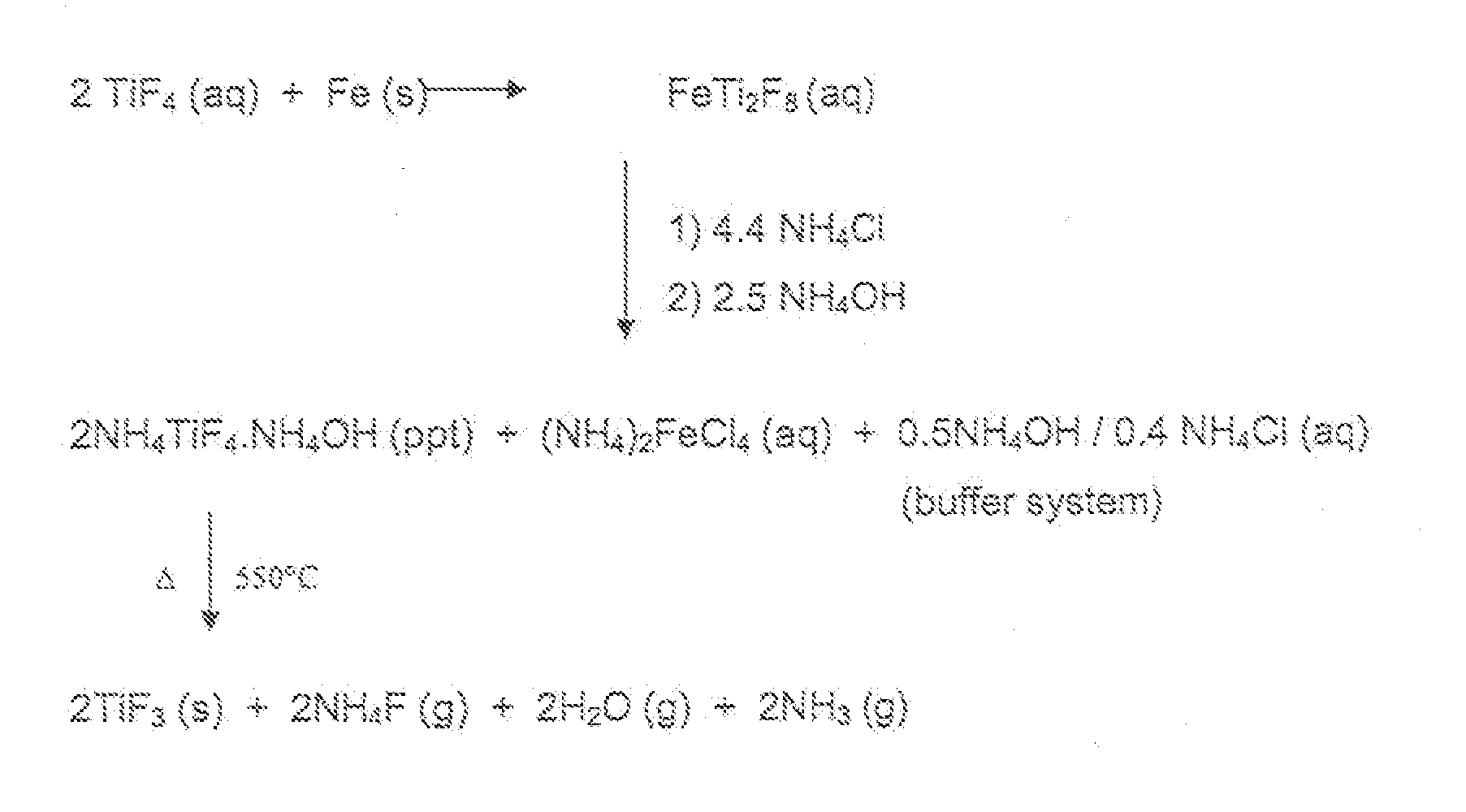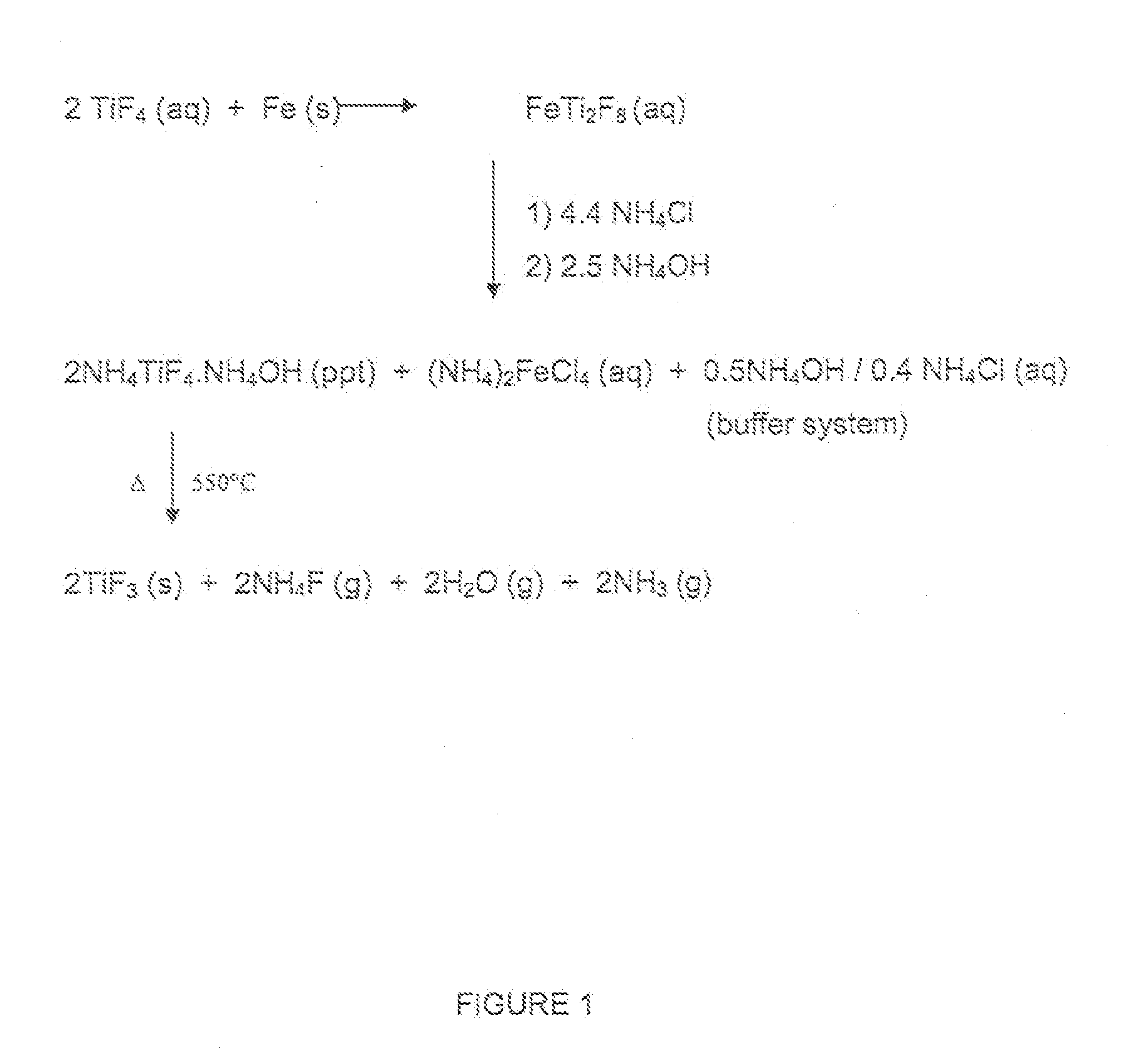Production of titanium trifluoride
a technology of titanium trifluoride and titanium halide, which is applied in the field of titanium trifluoride production, can solve the problems of a more expensive process and the like, and achieve the effects of reducing the affinity of fluoride ions, reducing the cost of process, and preventing oxidation and co-precipitation of metals
- Summary
- Abstract
- Description
- Claims
- Application Information
AI Technical Summary
Benefits of technology
Problems solved by technology
Method used
Image
Examples
example 2
Production of TiF3 Using Manganese, Cobalt, Nickel or Zinc
[0028]Reductions were carried out on the leachate of Example 1 using, respectively, manganese, cobalt, nickel and zinc as the reducing agent to produce TiF3.
[0029]In the case of reduction with iron, the off gases formed during the decomposition of the precipitate were scrubbed with slaked lime to form CaF2 and NH4OH. The (NH4)2FeCl4 stream is the same as that described in WO 2006 / 079887 A2, but produces approximately 50% less Fe per unit of Ti.
[0030]The NH4Cl did not need to be purified or crystallized, it was added as a saturated solution and water was added for the NH4Cl to dissolve.
[0031]Particularly, in the case of iron, the advantages of the method of the present invention over those of the process described in WO 2006 / 079887 A2 are:[0032]i) crude anatase can be used,[0033]ii) Fe is a much cheaper reducing agent than Al powder,[0034]iii) there is a 35% saving in HF cost (4 mol HF per Ti instead of 6 mol),[0035]iv) the am...
PUM
| Property | Measurement | Unit |
|---|---|---|
| temperature | aaaaa | aaaaa |
| wt % | aaaaa | aaaaa |
| wt % | aaaaa | aaaaa |
Abstract
Description
Claims
Application Information
 Login to View More
Login to View More - R&D
- Intellectual Property
- Life Sciences
- Materials
- Tech Scout
- Unparalleled Data Quality
- Higher Quality Content
- 60% Fewer Hallucinations
Browse by: Latest US Patents, China's latest patents, Technical Efficacy Thesaurus, Application Domain, Technology Topic, Popular Technical Reports.
© 2025 PatSnap. All rights reserved.Legal|Privacy policy|Modern Slavery Act Transparency Statement|Sitemap|About US| Contact US: help@patsnap.com


